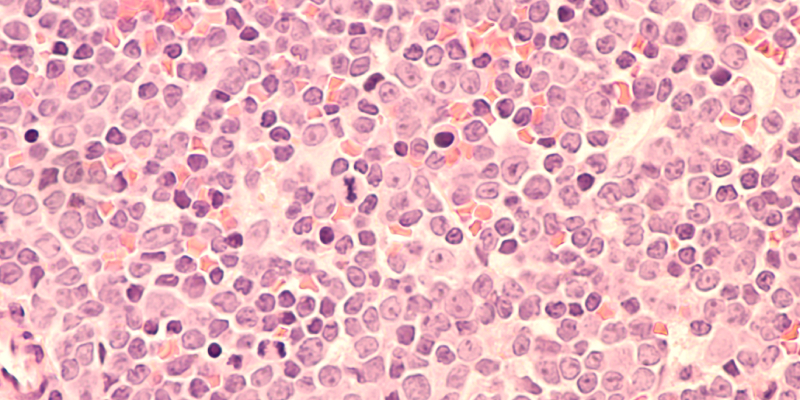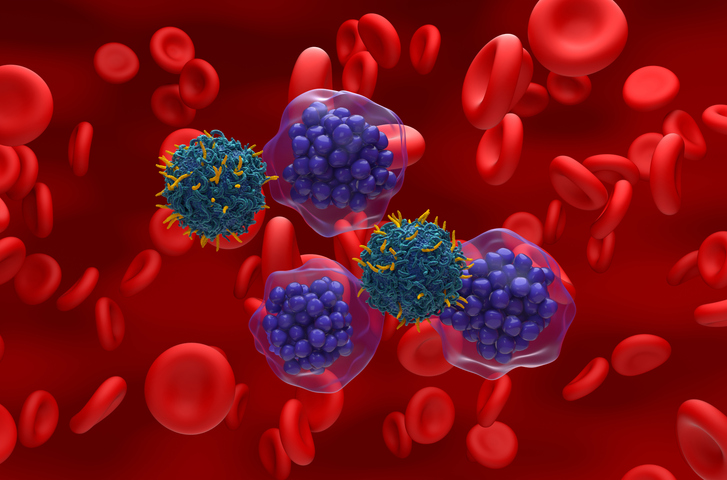
Certain molecular pathways and immune cell populations may be modulated by anakinra, according to a study of patients with relapsed/refractory large B-cell lymphoma (LBCL) who received prophylactic anakinra to reduce the risk of cytokine release syndrome (CRS) following axicabtagene ciloleucel.
Ning Yao, of the Harvard T.H. Chan School of Public Health, the Tri-Institutional PhD Training Program, and The Broad Institute, and colleagues presented the study’s results at the 2022 Society for Immunotherapy of Cancer Annual Meeting.
The researchers conducted the study on prophylactic anakinra because chimeric antigen receptor (CAR) T-cell therapy “has shown unprecedented treatment outcomes for B-cell malignancies,” but “wider utilization of CAR-T, however, is limited by CAR-T-induced adverse events, including CRS,” they wrote.
While tocilizumab, a monoclonal antibody blocking interleukin (IL)-6 receptor, is the only approved treatment for CRS, “recent animal studies suggest that anakinra, a recombinant form of IL-1 receptor antagonist, could have potential benefit in managing toxicity, with or without tocilizumab,” according to the study’s investigators.
They performed a clinical trial to assess prophylactic anakinra in patients with relapsed/refractory LBCL who were eligible to receive axicabtagene ciloleucel per the ZUMA-1 study. The researchers performed single-cell RNA sequencing on infusion products and on peripheral blood mononuclear cells collected one week after infusion from the first 10 subjects in the study.
The investigators compared data from the 10 patients with four control samples from the same institution, as well as previously generated single-cell RNA sequencing data from infusion products and day seven peripheral blood mononuclear cells from 19 patients who were treated with axicabtagene ciloleucel without prophylaxis for toxicity.
The IL-4 and IL-10 anti-inflammatory pathways in infusion products from patients who received anakinra and from those who did not receive anakinra were negatively associated with breakthrough CRS. The IL-4 and IL-10 pathways were also enriched at day seven in anakinra-treated CAR-positive, CD4-positive T-cell populations.
Anakinra prophylaxis had “little effect” on the overall CAR-positive T-cell compositions from infusion products to day seven but was “associated with an increased proportion” of CAR-positive regulatory T cells, according to the study’s authors.
Expression of interferon gamma (IFNγ) pathways, cytokine levels of IFNγ, and IFNγ-induced protein in CD14-positive monocytes “were significantly enriched” in patients receiving anakinra who had breakthrough CRS and were treated with tocilizumab, the investigators wrote.
“We identified key molecular pathways and immune cell populations that were possibly modulated by anakinra, including the upregulation of IL-10 signaling pathway in CAR-positive, CD4-positive T cells and increased abundance of [regulatory T cells],” the study’s authors concluded. “IFNγ enrichment in patients with breakthrough CRS further suggests that this pathway is also targetable and not inhibited by anakinra alone.”
Reference
Yao N, Frigault M, Wehrli M, et al. Single-cell RNA study of transcriptional activities associated with anakinra prophylaxis and axicabtagene ciloleucel in patients with relapsed/refractory large B-cell lymphoma. Abstract #301. Presented at the Society for Immunotherapy of Cancer Annual Meeting; November 8-12, 2022, Boston, MA.






 © 2025 Mashup Media, LLC, a Formedics Property. All Rights Reserved.
© 2025 Mashup Media, LLC, a Formedics Property. All Rights Reserved.